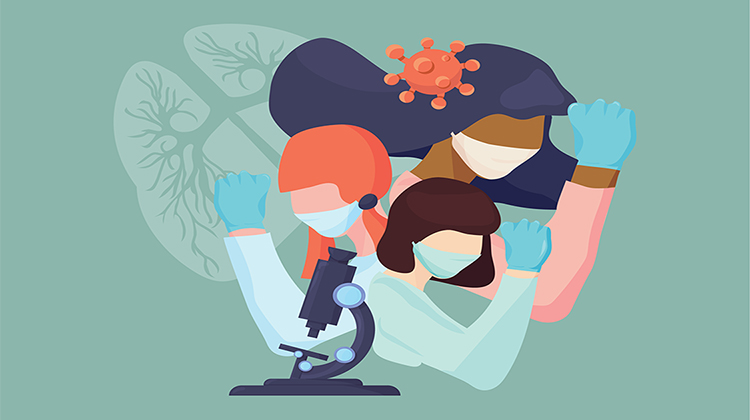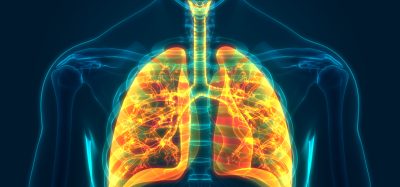Women in STEM with Cristina de Min
Posted: 16 October 2024 | Cristina de Min (Topas Therapeutics) | No comments yet
Driven by a passion for early-stage scientific discovery, Cristina de Min, MD, Chief Medical Officer at Topas Therapeutics, transitioned from clinical practice to drug development. Her expertise has played a pivotal role in advancing new treatments, with her achievements demonstrating her commitment to improving patient outcomes.


Can you tell us about your journey in the field of STEM and the challenges you encountered along the way?
I’ve always been drawn to the early stages of scientific discovery, where hypotheses are formed and developed into something tangible that can benefit patients. Being involved in these formative stages allows you to not only understand the challenges ahead but also shape the science to ensure it addresses patient needs. It’s an exciting process—anticipating development risks, predicting outcomes, and aligning these with the greater vision of medical advancement. The true joy comes from navigating these complexities and asking the right questions early on, because these foundational steps are critical to the success of any clinical development process. Respect for patients and the economic constraints we face must also guide our work, as resources are not infinite. We need to be meticulous, and our decisions must always prioritise patient safety.
What inspired you to pursue a career in STEM, and how did you overcome any obstacles or biases you may have faced?
My clinical background as a physician led me to drug development, where I realised I could have an even broader impact on patient well-being. The ability to translate clinical experience into scientific innovation was deeply inspiring to me, because it meant contributing to solutions that could benefit far more patients. Interestingly, to these days, there is still the misconception that physicians’ roles are limited to direct patient care. In reality, our deep understanding of disease pathology and patient needs is instrumental in shaping both basic and clinical research into viable treatments. By fostering the fluid movement between research and clinical practice, we can better contribute to the development of therapies, which has been the most rewarding aspect of my career.
Could you share an example of a specific project or research that you have worked on and the impact it has had in your field?
In two of the most groundbreaking projects I was involved in, in both cases we investigated new targets to fight diseases—specifically we targeted the neutralisation of IL-6 activity for autoimmune diseases and IFNg activity for a rare and lethal disease that primarily affects infants and children. Both research efforts resulted in the creation of new drugs. I must say that it was very rewarding to see the data for one of these research projects published in the New England Journal of Medicine!1,2 Moments like these, where we bring new mechanisms through clinical testing, reaffirm my commitment to drug development.
How has your research in STEM contributed to advancements or improvements in your field, and what potential future applications or implications do you foresee based on your work?
Curiosity is the cornerstone of my approach to drug development, and it’s essential to have a multidisciplinary understanding of science. A successful drug developer must have a deep understanding of pharmacokinetics, pharmacodynamics, safety protocols, biostatistics, translational research, and how to make decisions with the full scope of patient care in mind. Looking forward, I believe drug development will become increasingly precise, with an even stronger emphasis on data integration. This precision will allow us to more accurately predict how treatments will perform in real-world scenarios, ultimately benefiting patients with more targeted and effective therapies.
As a woman in STEM, what unique perspectives or strengths do you believe you bring to your work?
Again, it comes down to curiosity and the willingness to ask difficult questions, possibly early on in the research process, without being afraid of the answers. Drug development is an ongoing process of discovery—it requires continuous learning, whether through studying, reading, or hands-on experience. Maintaining this intellectual curiosity is crucial for success, particularly for women entering STEM fields. There is still a need for more fluidity between clinical practice and research, but as long as we maintain a strong focus on the science and patient outcomes, progress will continue.
What advice would you give to young women who are considering a career in STEM but may be hesitant due to societal stereotypes or perceived challenges?
Representation in STEM has improved significantly over the years, but it’s important for women not to wait for perfect conditions to pursue leadership roles or opportunities. We have the responsibility to take initiative and make our presence known. Throughout my own career, I’ve seen women become better represented across many areas of the field. It’s crucial that we continue to build on this progress by stepping forward and leading the way for future generations.
How do you see the representation of women in STEM changing over the years, and what further progress do you believe is needed?
We’ve seen significant progress in representation, especially in leadership roles. The key is flexibility—allowing people to work in ways that suit them best, whether that’s from home or the office. This flexibility fosters creativity and productivity. Additionally, I believe that the knowledge we generate needs to be shared effectively within our teams and that leading by example is the best way to build enthusiasm and momentum. Scientific development is not always a straight line, and it’s our responsibility to make it as precise as possible, especially when the stakes are life and death.
Looking ahead, what exciting developments or advancements do you foresee in your field of STEM, and how do you envision your own research contributing to those future innovations?
The future of drug development lies in our ability to harness precision. We are already seeing advancements in autoimmune disease therapies, and I’m excited to continue working on programs that push the boundaries of what’s possible. My focus will remain on ensuring that we develop therapies that are not only safe and effective but also durable and accessible to the patients who need them most.
References
1 Monnet, E., Choy, E. H., McInnes, I., Kobakhidze, T., de Graaf, K., Jacqmin, P., … & de Min, C. (2020). Efficacy and safety of NI-0101, an anti-toll-like receptor 4 monoclonal antibody, in patients with rheumatoid arthritis after inadequate response to methotrexate: a phase II study. Annals of the rheumatic diseases, 79(3), 316-323.
2 Locatelli, F., Jordan, M. B., Allen, C., Cesaro, S., Rizzari, C., Rao, A., … & de Min, C. (2020). Emapalumab in children with primary hemophagocytic lymphohistiocytosis. New England Journal of Medicine, 382(19), 1811-1822.
About the author
Cristina de Min, MD, Chief Medical Officer at Topas Therapeutics


Related topics
Drug Development
Related organisations
Topas Therapeutics
Related people
Cristina de Min (Topas Therapeutics)








